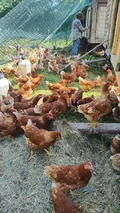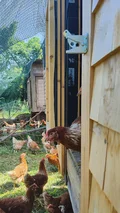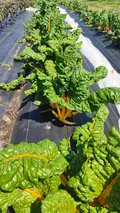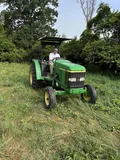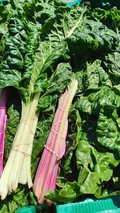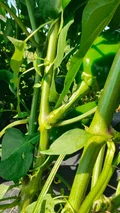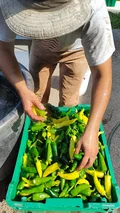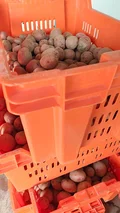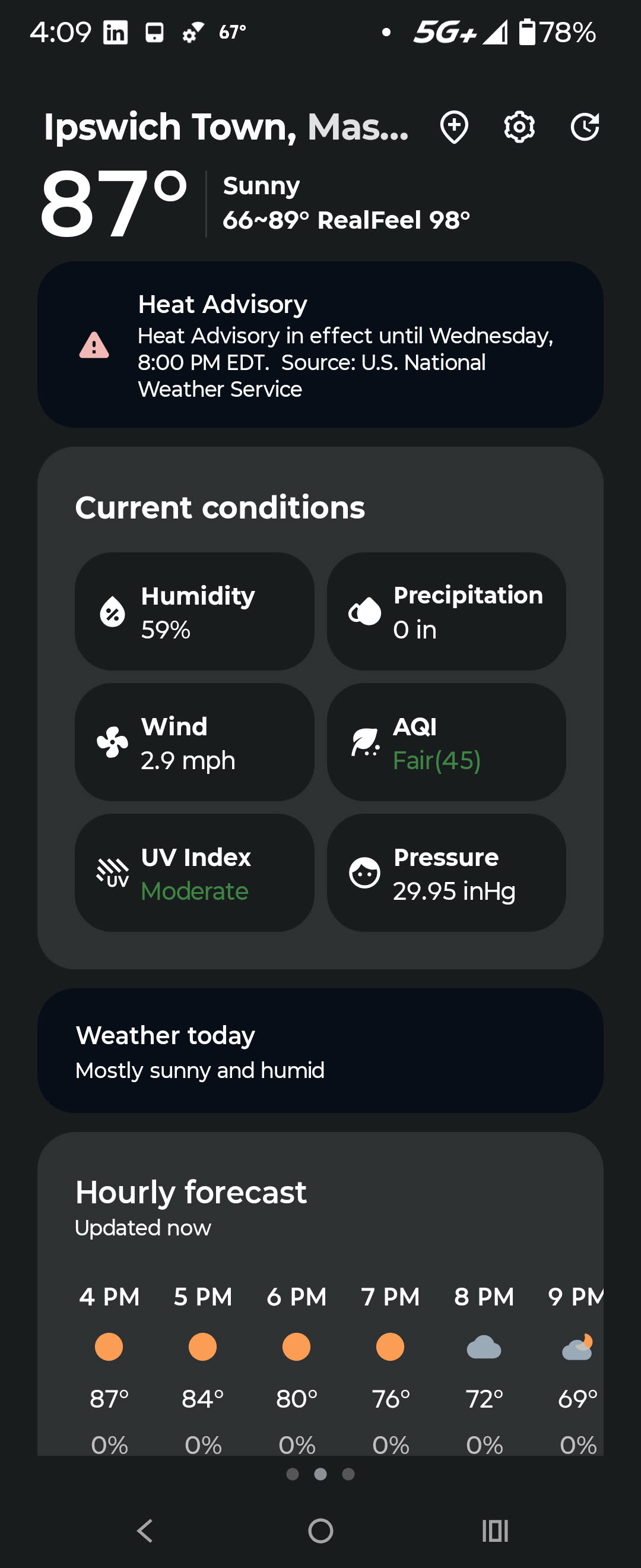TL;DR
A quick retrospective of the month’s farm operations and prioritization changes. Most of our activities don’t change week over week, but every so often something reminds you to stay on your toes.
Mostly Slow, but Occasionally Fast
Week to week, our priorities and activities are mostly the same on the farm. You get into the groove of washing things in the morning, harvesting, weeding, moving around irrigation, and doing chores…but it’s easy to also forget that there are risks involved in physical work.
However today, I had a near miss with a chicken coop hitch falling near enough to my foot to give me a little bruise. It was a reminder that even when we’re careful, chance might have something else in store. Fortunately, after some overnight RICE (rest, ice, compression, elevation), my foot feels fine today.
Being ready for the unexpected is a good habit to maintain, even if you seek to avoid it.
Last Month’s Hypothesis in Review
Last month, I wrote about ‘Multithreading and Background Prioritization at the Farm’ whereby the title was dual purpose, both reflective of the article and a little tongue-in-cheek. I wanted to show parallels between how a farmer prioritizes activities and how a programmer thinks about how to write programs that are efficient with resources, particularly CPUs and GPUs. A visual of this hypothesis is below:
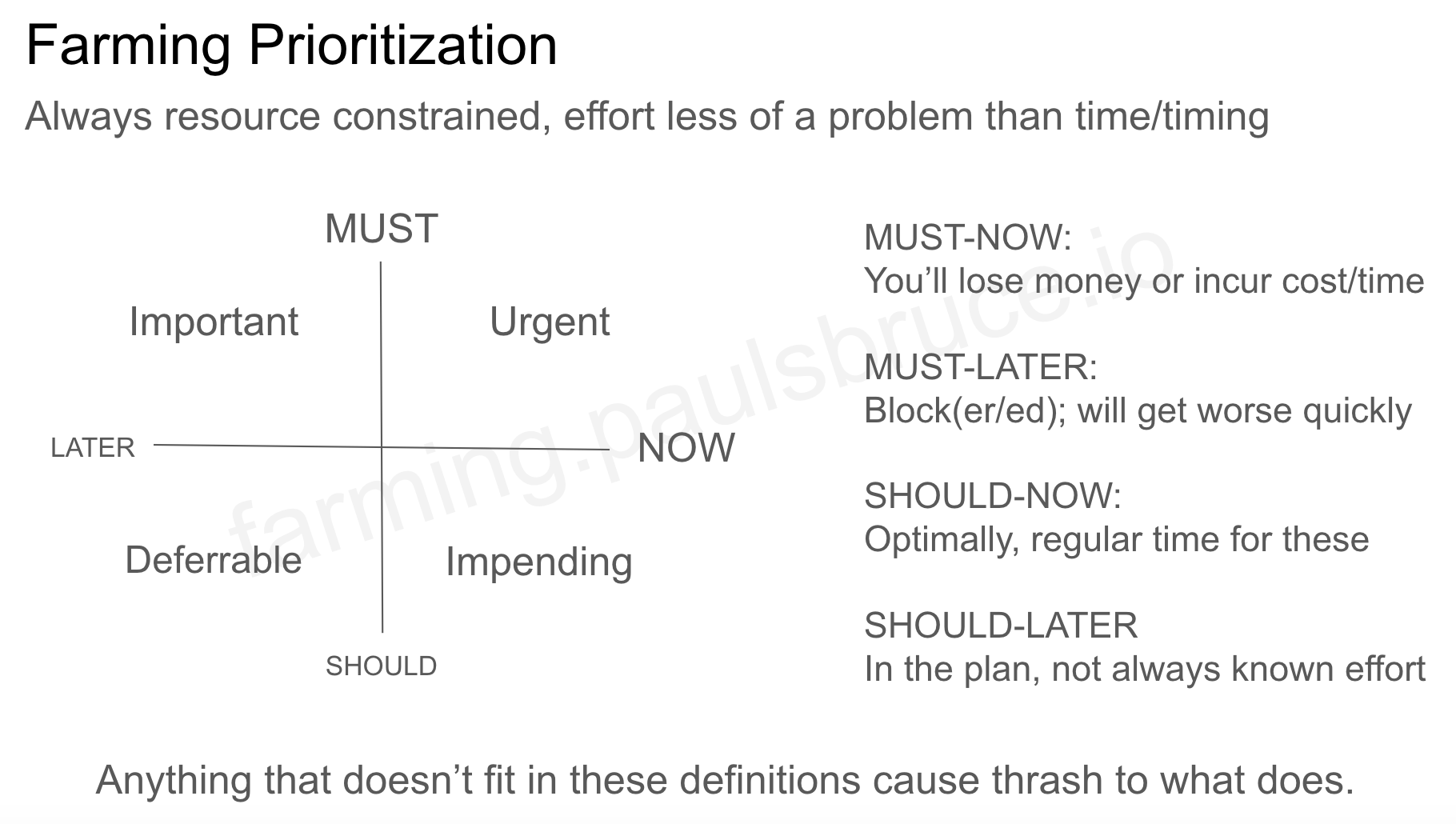
In short, the order goes:
- URGENT: Must do right now, otherwise you’ll lose money or incur cost/time
- IMPORTANT: Must do later/soon; either blocked by URGENT or a blocker to IMPENDING/DEFERRABLE activities; if not done, will make problems worse quickly because time marches on
- IMPENDING: Activities that are able to be done at the optimal time; usually daily chores fit here
- DEFERRABLE: Things that are in the plan (i.e. legitimate needs), but the effort to do them isn’t always known or it’s not the right time of season to do them (cover crop termination, haying, etc.)
Priorities Change Month to Month
Each month, the priorities shift based on the season, weather, and the needs of the farm. Sometimes this is true week-to-week, especially during particularly extreme weather such as the past few weeks of on-and-off heat advisories. Additionally, things that were once DEFERRABLE become IMPENDING and IMPORTANT because time marches on, but don’t worry…there’s always more things to take their place at the bottom of the heap.
Examples of this month’s priorities are:
- URGENT: Harvesting, harvesting, harvesting, and selling at markets; also WATERING
- IMPORTANT: Preparing beds, planting, weeding, hoeing
- IMPENDING: Seeding fall crops, moving coops, barn tidy
- DEFERRABLE: Field cleanup, dead weed pile consolidation, baiting fences
Going into August, these are very different than the priorities in April and May, but June and July have been similar since the CSA kicked off 9 weeks ago.
A Longer Retrospective
Since I blog every day I’m on the farm and this includes an breakdown of the key activities, at a later time I intend to go back through week-by-week with the above matrix as a lens to see how the priorities change. This will also be good exercise to correlate with precise weather conditions at the time of specific activities (or their deferrals).
One thing I’d like is a sort of meta-model for how a farm like this operates throughout the season, then use that to predict what the week-to-week (maybe even day-to-day) activities might include. As a software engineer, I’m always curious about how I could model or approximate a complex system without necessarily all the same inputs, dynamics, or level of detail as the real system itself.
I’m also very interested in developing these meta-models for other [types of] organic farms, locations, and yearly weather conditions. Anything that can help farmers think through their operations and plan ahead would be valuable, though I’m sure that the farmer themselves would have the best understanding of their own farm’s dynamics.
Semantical Segmentation on This Blog
This past weekend, I worked to extract key topics from each of the sections via LLM calls in all of the posts on this blog. This first meant coming up with an algorithm to identify sections which, while it doesn’t sound too hard because the markdown consistently uses pound-heading characters, it’s more than that…I want each paragraph to potentially be tagged (if needed) with sub-topics. You can see this in the view-source and as little vertical lines on the right of each section text with tags applied.
The section tagging is a bit…verbose. I actually don’t mind the extra topics, but I do not want them to be visually cumbersome to readers. So I have a few UX ideas of how to fix this when I have time. For now, I’m going to leave it as is to show the progress made towards the main goal, which is that I want to eventually be able to parse the contents of this blog and extract specific content as training for my own AI model around organic farming. This will also include other sources, public ones, and with attribution and traceability to training data.
AI Summary from Field Notes
For today, the LLM summary below is what I deserve, since I’m using a stock Qwen3:4b model with no additional embeddings or RAG:
Consolidated Summary
Main Themes
- Farm Operations: Daily tasks like moving chicken coops, harvesting vegetables, and managing irrigation.
- Weather Impact: Extreme heat and humidity affecting work conditions and crop growth.
- Harvesting Techniques: Time-consuming, precise pepper harvesting requiring care to avoid plant damage.
- Sanitation and Health Protocols: Separation of chicken areas from vegetable fields for six months to prevent contamination.
Activities Performed
- Moved chicken coops for future expansion.
- Bunched Swiss chard and onions (pulled on Friday).
- Checked and adjusted irrigation systems.
- Harvested and washed peppers.
- Documented observations and processes.
New Things Encountered
- Pepper Varieties: Identification of specific pepper types (e.g., “long red peppers”).
- Sanitation Requirements: Strict separation of chicken and vegetable areas for six months.
- Irrigation Management: Adjusting water systems for optimal crop growth.
- Heat Challenges: High temperatures during harvesting (e.g., sun at 9 AM).
Questions for Future Research
- How do different pepper varieties affect harvesting efficiency?
- What are the long-term effects of the chicken-vegetable separation rule on soil health?
- How can heat stress during harvesting be mitigated?
- What training improves pepper harvesting efficiency and reduces plant damage?
Suggested Actions
- Document Pepper Varieties: Track specific types for better harvesting practices.
- Improve Irrigation Systems: Optimize water management for crops.
- Monitor Sanitation: Track soil and crop health over time.
- Implement Cooling Measures: Use shade, hydration, or schedules to reduce heat stress.
- Train Staff: Develop best practices for handling peppers to minimize damage.
This summary captures key themes, activities, new observations, research questions, and actionable steps from the detailed breakdown.
Part 1
Main Themes:
- Farm Operations: Daily tasks such as moving chicken coops, harvesting vegetables, and managing irrigation.
- Weather Impact: Extreme heat and humidity affecting work conditions and crop growth.
- Harvesting Techniques: Detailed, time-consuming processes for peppers, requiring precision to avoid damaging plants.
- Sanitation and Health Protocols: Separation of chicken areas from vegetable fields to prevent contamination.
Activities Performed by the Intern:
- Moved chicken coops to a new location for future expansion.
- Bunched Swiss chard and onions (pulled on Friday).
- Assisted with irrigation setup and checks.
- Harvested hot peppers (Hungarian hot wax, jalapenos, and long red peppers).
- Washed and stored harvested peppers.
- Documented the day’s work and challenges (e.g., heat, time constraints).
New Things Not Yet Encountered:
- Pepper Varieties: Specific types like “long red peppers” (exact name unknown) and their maturation process.
- Sanitation Requirements: The six-month separation rule between chicken manure and vegetable fields.
- Irrigation Management: Adjusting irrigation systems for optimal crop health.
- Heat-Related Challenges: The physical strain of harvesting peppers in high temperatures.
Questions and Future Research Areas:
- Pepper Varieties: What are the exact names and characteristics of the long red peppers? How do they differ from other pepper types?
- Sanitation Effectiveness: How does the six-month separation rule impact crop yield or health in the long term?
- Heat Impact: How can the farm mitigate the effects of extreme heat on workers and crop productivity?
- Harvesting Efficiency: Are there tools or techniques to reduce the time and effort required for harvesting peppers?
Suggested Actions:
- Document Pepper Varieties: Create a list of all pepper types identified (e.g., Hungarian hot wax, jalapenos, long red peppers) for future reference.
- Improve Irrigation Systems: Evaluate the current irrigation setup to ensure it meets the needs of different crops.
- Monitor Sanitation Practices: Track the long-term effects of the chicken-vegetable separation rule on soil health and crop growth.
- Implement Shade or Cooling Measures: Explore ways to reduce heat stress during harvesting (e.g., shaded areas, hydration schedules).
- Train Staff on Pepper Harvesting: Develop best practices for handling peppers to prevent plant damage and improve efficiency.
[end of post]
Enjoy Reading This Article?
Here are some more articles you might like to read next:

